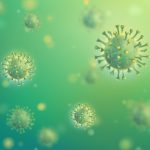People Literally Do NOT See ‘Eye-to-Eye’
Node Smith, ND
We humans may not always see eye to eye on politics, religion, sports and other matters of debate. But at least we can agree on the location and size of objects in our physical surroundings. Or can we?
Can we really see eye-to-eye?
Not according to new research from the University of California, Berkeley, recently published in the Proceedings of the Royal Society B: Biological Sciences journal, that shows that our ability to pinpoint the exact location and size of things varies from one person to the next, and even within our own individual field of vision.
Perception is NOT a perfect reflection of the physical world
“We assume our perception is a perfect reflection of the physical world around us, but this study shows that each of us has a unique visual fingerprint,” said study lead author Zixuan Wang, a UC Berkeley doctoral student in psychology.
The discovery by Wang and fellow researchers in UC Berkeley’s Whitney Laboratory for Perception and Action has ramifications for the practices of medicine, technology, driving and sports, among other fields where accurate visual localization is critical.
For example, a driver who makes even a small miscalculation about the location of a pedestrian crossing the street can cause a catastrophe. Meanwhile, in sports, an error of visual judgment can lead to controversy, if not a fiercely disputed championship loss.
For example, the 2004 U.S. Open quarterfinals
Take, for example, the 2004 U.S. Open quarterfinals, in which tennis icon Serena Williams lost to Jennifer Capriati after a series of questionable line calls. An umpire incorrectly overruled a line judge who called a backhand hit by Williams as in, resulting in an apology to Williams by the U.S. Tennis Association.
“Line judges need to rule on whether the ball is outside or inside the parameters. Even an error as small as half a degree of visual angle, equal to a sub-millimeter shift on the judge’s retina, may influence the result of the whole match,” said Wang, a die-hard tennis fan.
Researchers sought to understand if different people see objects in their surroundings exactly the same way
Researchers sought to understand if different people see objects in their surroundings exactly the same way. For example, when glancing at a coffee cup on a table, can two people agree on its exact position and whether its handle is big enough to grip? The result of a series of experiments suggest not, though there’s an upside.
“We may reach for a coffee mug thousands of times in our life, and through practice we reach our target,” Wang said. “That’s the behavioral aspect of how we train ourselves to coordinate how we act in relation to what we see.”
Testing visual localization
In the first task to test visual localization, study participants pinpointed on a computer screen the location of a circular target. In another experiment looking at variations of acuity within each person’s field of vision, participants viewed two lines set a minimal distance apart and determined whether one line was located clockwise or counterclockwise to the other line.
And in an experiment measuring perception of size, participants viewed a series of arcs of varying lengths and were asked to estimate their lengths. Surprisingly, people perceived the exact same arcs to be bigger at some locations in the visual field and smaller at other locations.
The results showed remarkable variations in visual performance
Overall, the results showed remarkable variations in visual performance among the group and even within each individual’s field of vision. The data were mapped to show each study participant’s unique visual fingerprint of perceptual distortion.
“Though our study might suggest that the source of our visual deficiencies can originate from our brain, further investigations are needed to uncover the neural basis,” said Wang.
“What’s also important,” she added, “is how we adapt to them and compensate for our errors.”
Other co-lead authors of the study are David Whitney at UC Berkeley and Yuki Murai at UC Berkeley and Osaka University in Japan.
1. Zixuan Wang, Yuki Murai, David Whitney. Idiosyncratic perception: a link between acuity, perceived position and apparent size. Proceedings of the Royal Society B: Biological Sciences, 2020; 287 (1930): 20200825 DOI: 10.1098/rspb.2020.0825

Node Smith, ND, is a naturopathic physician in Humboldt, Saskatchewan and associate editor and continuing education director for NDNR. His mission is serving relationships that support the process of transformation, and that ultimately lead to healthier people, businesses and communities. His primary therapeutic tools include counselling, homeopathy, diet and the use of cold water combined with exercise. Node considers health to be a reflection of the relationships a person or a business has with themselves, with God and with those around them. In order to cure disease and to heal, these relationships must be specifically considered. Node has worked intimately with many groups and organizations within the naturopathic profession, and helped found the non-profit, Association for Naturopathic Revitalization (ANR), which works to promote and facilitate experiential education in vitalism.









